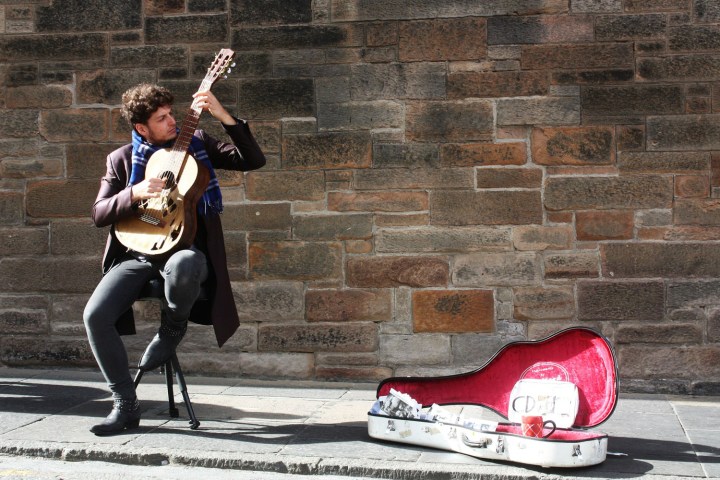
“We’ve isolated the rhythms in the brain that match rhythms in music,” explained Doelling. “Specifically, our findings show that the presence of these rhythms enhances our perception of music and of pitch changes.” And more interestingly still, says co-author David Poeppel, an NYU professor and the director of the Max Planck Institute for Empirical Aesthetics, is the fact that “we can be trained, in effect, to make more efficient use of our auditory-detection systems. Musicians, through their experience, are simply better at this type of processing.”
To conduct their research, Doelling and his colleagues made use of a technique known as magnetoencephalography (MEG), which takes measurements of the minuscule magnetic fields produced through brain activity. When study participants without musical training were asked to “detect short pitch distortions in 13-second clips of classical piano music (by Bach, Beethoven, Brahms) that varied in tempo — from half a note to eight notes per second,” researchers found that non-musicians were unable to synchronize with particularly slow clips. And for trained musicians (defined as individuals with six years or more of musical training), their brains appeared to synchronize more with musical rhythms.
Ultimately, Doelling and his team concluded, the findings may suggest that non-musicians “are unable to process the music as a continuous melody rather than as individual notes.” And moreover, brain rhythms “appear to play a role in parsing and grouping sound streams into ‘chunks’ that are then analyzed as speech or music.”
The good news, of course, is that this is something you can effectively “teach” your brain to do. So get back to the piano bench, friends — you always knew you shouldn’t have quit so early.
Editors' Recommendations
- Facebook’s new Collab music app is a fun way to play with others
- A.I. musicians are a growing trend. What does that mean for the music industry?


